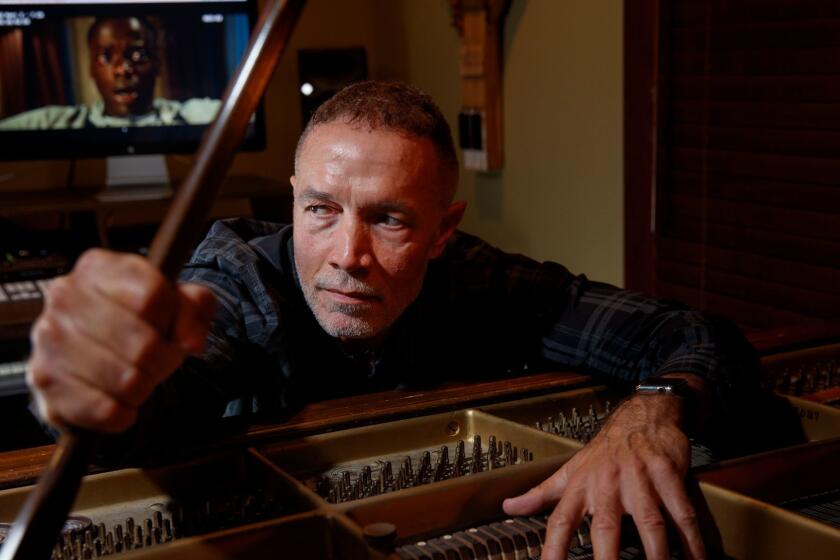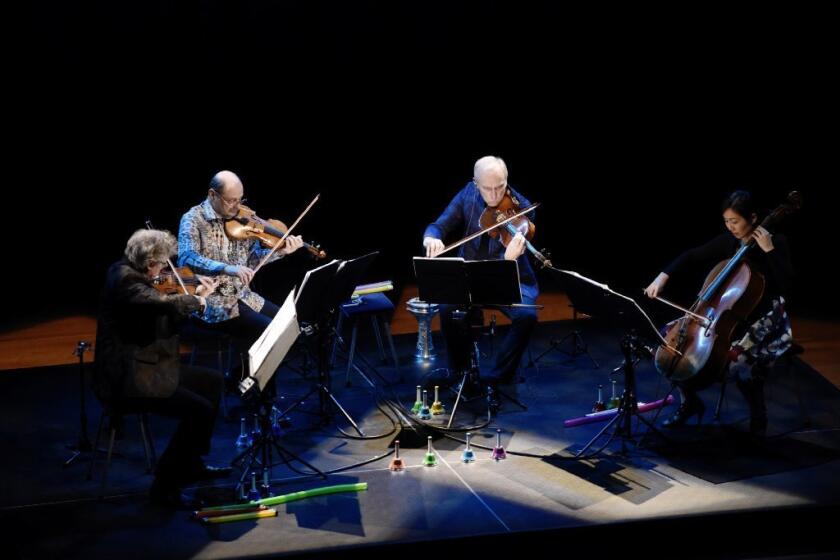How Rhiannon Giddens and Michael Abels turned an enslaved man’s narrative into an opera
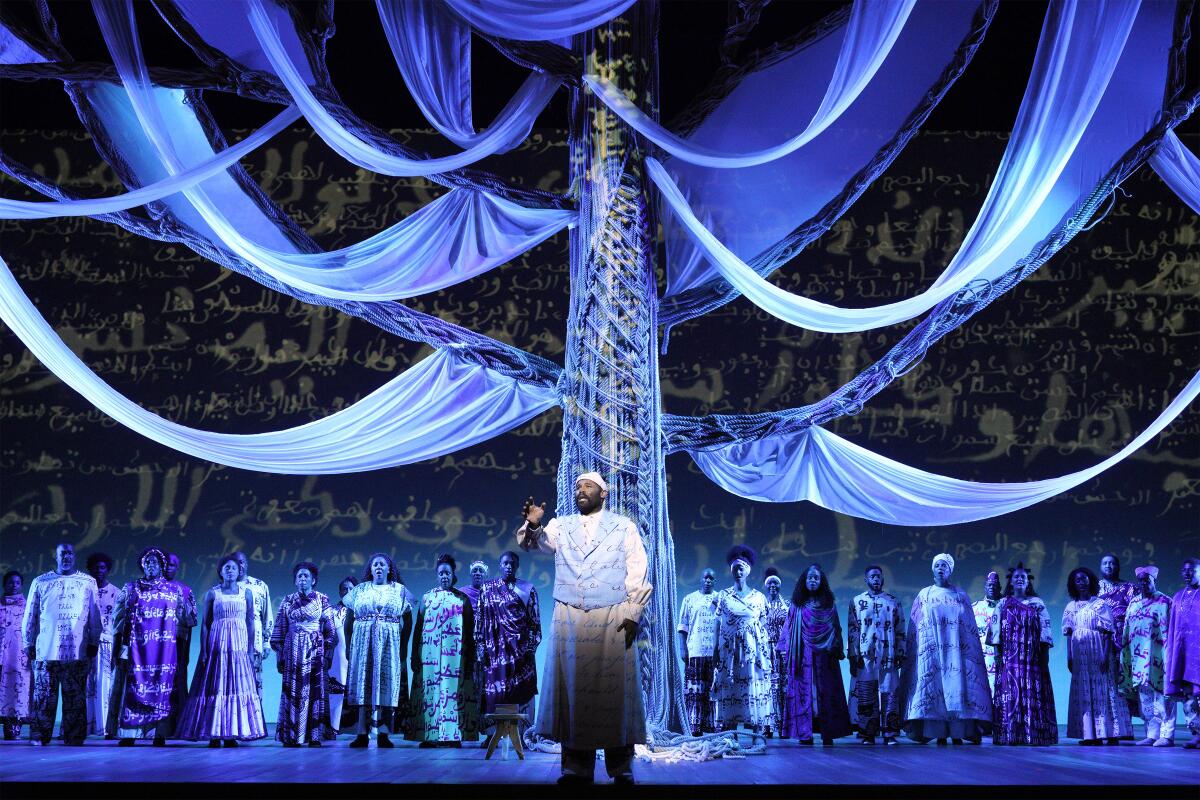
- Share via
Omar ibn Said, a Muslim scholar from Senegal, wrote an autobiography in 1831 about how he was captured and sold into slavery for decades in the Carolinas. His memoir, written in Arabic, brims with quotations from the Quran; his “Christian” owners stood over his shoulder as he wrote. Yet Said captured the true story of who he was between the lines.
“You realize that he’s telling you far more with his choices of Quranic verses,” says musician Rhiannon Giddens. “What he chooses to quote, when, and in response to what — that’s telling you a lot about who he is.”
Known for her Grammy-winning Americana songs for banjo and voice, Giddens has reclaimed the Black roots of the banjo and other Appalachian traditions in her work. When Charleston’s Spoleto Festival asked her in 2017 if she wanted to compose an opera about Said, she was shocked that she had never heard of him. “Given the fact that I write songs and I’ve figured out how to condense a whole story into three minutes, maybe I can figure out how to condense his story into an hour and a half,” she remembers thinking. Her resulting opera about Said, “Omar,” will make its West Coast premiere with the Los Angeles Opera on Saturday.
It helped that Giddens, 45, studied and sang opera at Oberlin Conservatory. She knows the language well, and for her it’s not that complicated. “My definition of opera is: You don’t need a microphone.”
Still, Giddens writing her first opera was a process with a learning curve. “There was an enormous hump to get over with me not thinking that I was a composer,” says the singer-songwriter, who had a “crisis of understanding” a few years ago when the Kronos Quartet invited her to write a string quartet. “Once I got over that hump, I was kind of like: Oh, I get it. I am a composer — I just do it in a different way.”
The omnivorous Americana star blurs lines by collaborating with everyone from ballet companies to jazz virtuosos while doing battle against Eurocentrism.
But opera, traditionally, also implies a large-scale work for orchestra and often choir, and Giddens had never written for so many instruments. A fan of Michael Abels’ scores for “Get Out” and “Us,” she reached out to the composer — who had been wanting to write an opera since high school.
Abels, 60, remembers attending a music camp and learning about opera for the first time: “The teacher, who was a singer himself, explained, ‘You know, opera was the movies before there were movies.’ And my young ears perked up. And he said, ‘Why are the voices so big? It’s because there’s no amplification! Their voices are trained. It’s a muscle. They’re athletes!’”
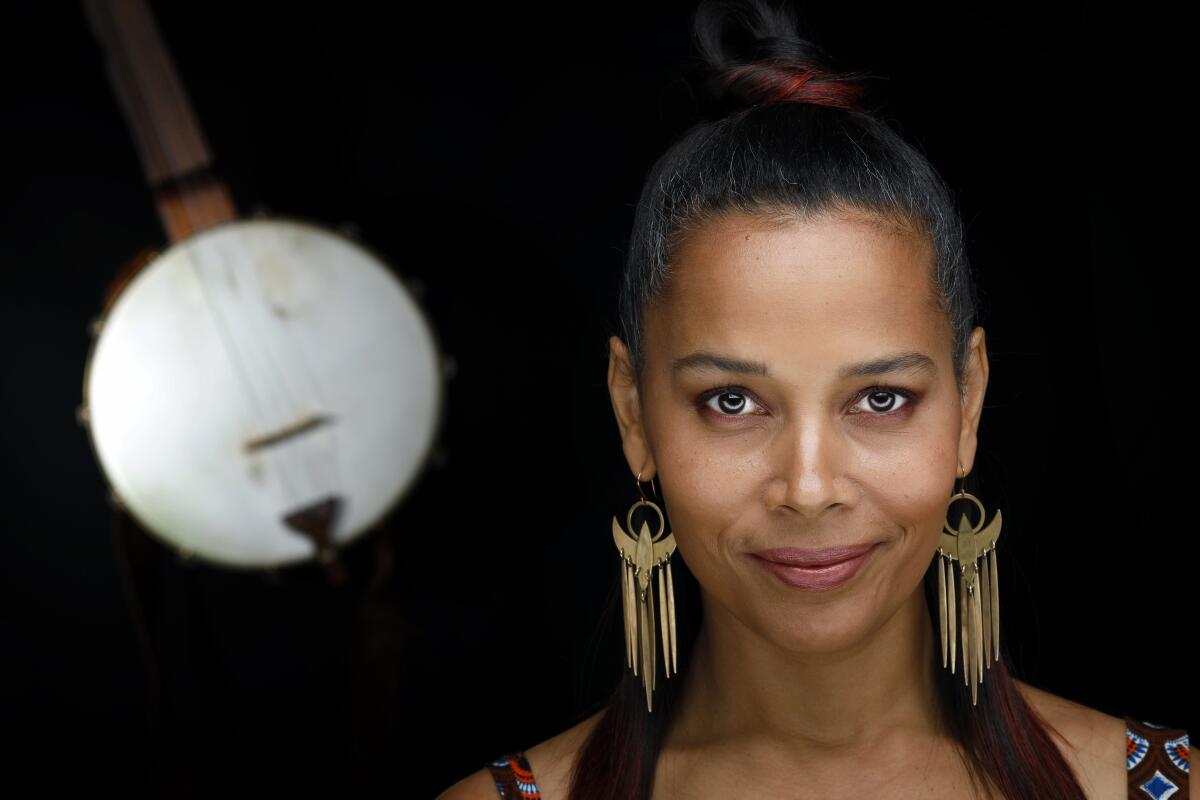
He made his first attempt in 1999 when he wrote a short operetta for L.A. Opera’s education program. A decade later he developed an original idea inspired by the Rodney King case but wasn’t able to land a commission.
Film composers are naturals for writing opera, Abels believes, because they’re “always collaborating and seeking to make a larger thing, to have the music serve the purposes of a larger artistic project.” Also, he adds, “the pacing of the evening and the different experiences of the story [are] crucial.”
Giddens wrote her libretto for “Omar” and began sending Abels a slow deluge of recordings of lines — vocal lines, banjo ostinatos, keyboard melodies. Some were fully conceived arias, some were connective tissue, but it was all tuneful.
“You can make opera with full orchestra and singers, and have it be consonant, have it be humble — and have tunes!” she says.
Abels transcribed her threads and wove them into grand opera, drawing inspiration from classical Americana, gospel music and Arabic modalities alike. The duo decided early on to use a conventional orchestra. Partly that was for replicability: They didn’t want any opera company stymied by the requirement of a special banjo or djembe player. But it was also a decision that allowed them to smuggle a multiplicity of ideas into a traditional through line — just as Omar had in his memoir.
No one expected Jordan Peele’s low-budget horror/comedy “Get Out” to make $253 million worldwide, while charming practically every film critic.
“This is a story that is very, very important and not known, and you wouldn’t think operatic,” says Giddens, “even though it is, in scope, absolutely operatic. And then I’m putting in all this vernacular, folk-inflected stuff because of who I am, in addition to my classical leanings, which also came out in different places. And then you have Michael’s film scoring chops and the way that he evokes emotion with his choice of color in the orchestra.”
“We decided to go with the orthodox tools,” she adds, “and then create something that is unusual.”
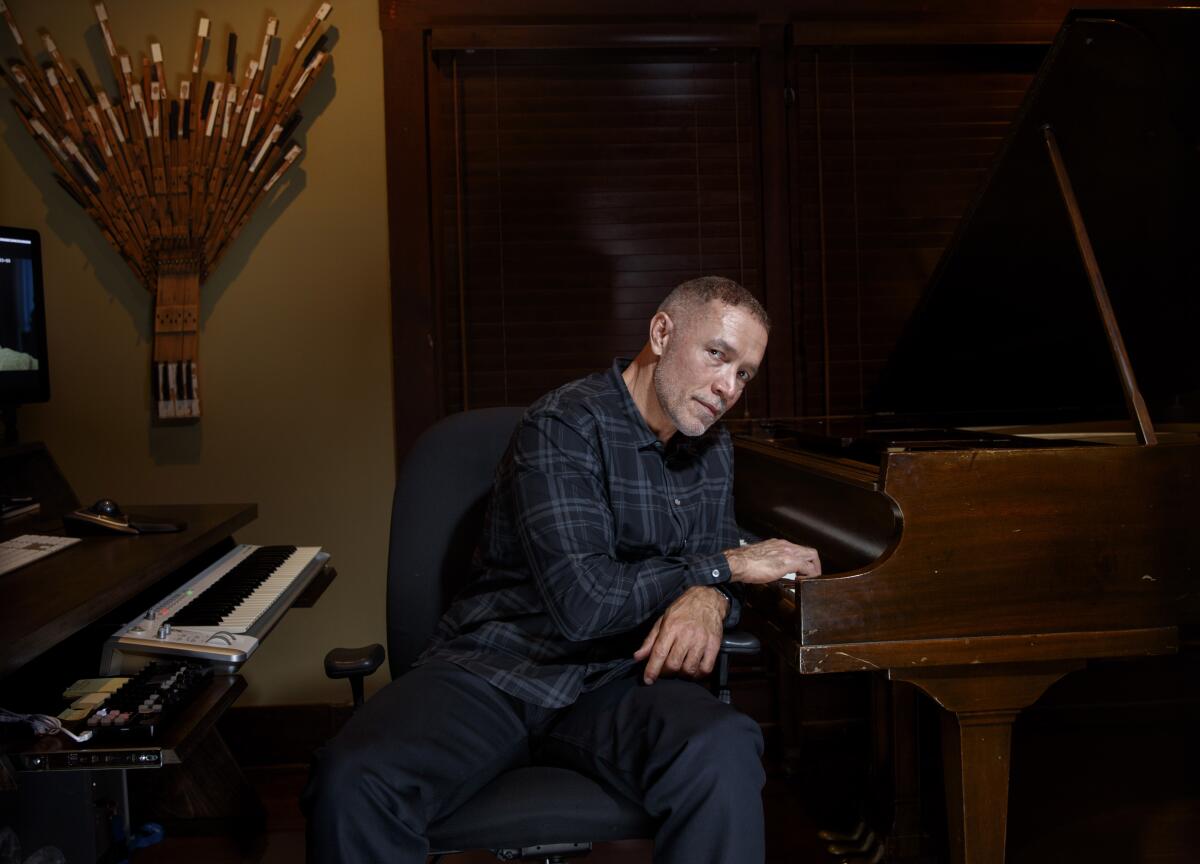
The unique combination of Giddens’ folk leanings and Abels’ cinematic voice also resulted in emotional complexity. In the aria sung by Julie, an enslaved woman who helps Omar in Charleston, S.C. — and a character Giddens created — “the harmony is both happy and dark at the same time,” says Abels.
“A lot of the opera is meant to be that way, where it’s a very happy tune by itself, but then in the context it’s actually got a dark undertone. That’s one of the primary ways we collaborated, is being able to cast something that might sound like folk music in a way that an opera allows you to show the full, dark picture about something that might not happen in a folk tune.”
The symbolic meaning of the string quartet, the most perfect ensemble, is that of harmony raised high.
“Omar” is the story of Said’s spiritual journey — of wondering where Allah is amid the terrible turns his life takes — but it’s also a story about the complex origins of American music. The opera features square dancing, gospel, blues, Islamic prayer; the overture begins with one of the earliest documented tunes composed by an enslaved person in the Americas: a piece known as “Koromanti,” transcribed from musicians living in Jamaica in 1688.
In much of the work, the orchestra acts as Giddens’ banjo.
“Nobody would ever write those lines as a compositional major,” she says, laughing. “They’re clearly banjo lines — that fifth string just does the thing that it does.”
'Omar'
Where: Los Angeles Opera at the Dorothy Chandler Pavilion, 135 N. Grand Ave., downtown L.A.
When: 7:30 p.m. Saturday and Nov. 2, 5 and 9; 2 p.m. Oct. 30 and Nov. 13.
Tickets: $15-$199
Info: (213) 972-8001, laopera.org
In English with English subtitles
More to Read
The biggest entertainment stories
Get our big stories about Hollywood, film, television, music, arts, culture and more right in your inbox as soon as they publish.
You may occasionally receive promotional content from the Los Angeles Times.
